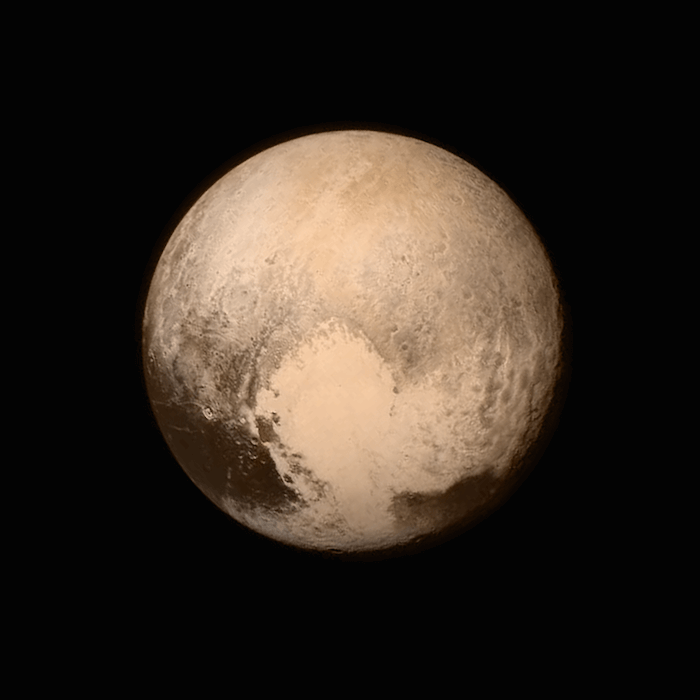
In 2015, three billion miles away, Pluto sent a “love note” back to Earth, via NASA's New Horizons spacecraft. Credit: NASA/JHUAPL/SWRI
First thing’s first… Is Pluto a planet? In 2006, Pluto was reclassified from a planet… to a dwarf planet. Pluto is now categorized as a dwarf planet along with other objects in the solar system that are similar to Pluto: Ceres, Makemake, Haumea, and Eris.
Explore Pluto! Click and drag to rotate Pluto. Scroll or pinch to zoom in and out. Credit: NASA Visualization Technology Applications and Development (VTAD)
Which sentence best describes Pluto?
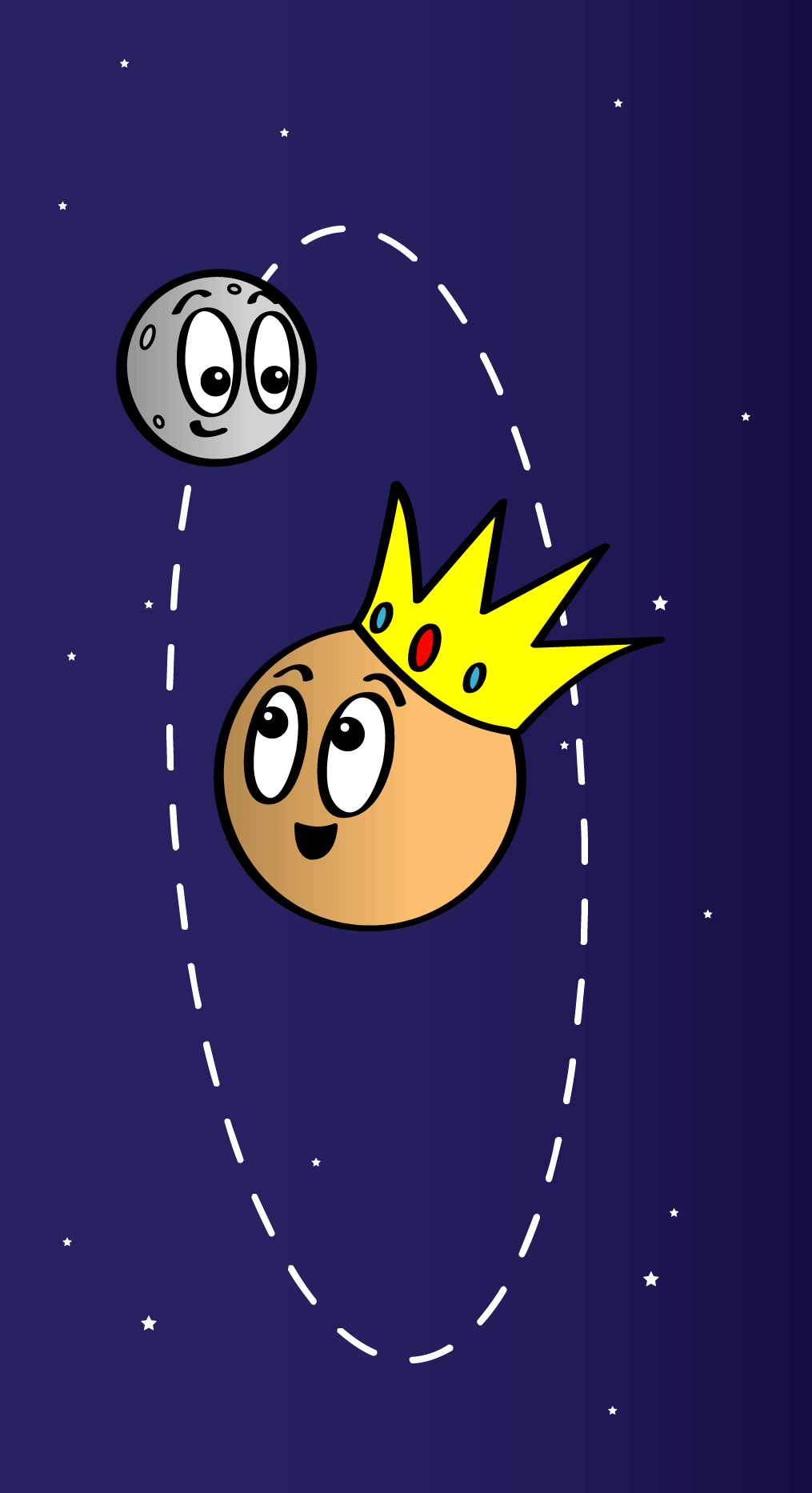
Credit: NASA/JPL-Caltech
- Pluto is actually closer to the Sun than Neptune for about 8% of its orbit.
- Pluto is just one of many icy objects in a distant area of our solar system.
- Pluto and its large, orbiting moon Charon, are tipped on their sides.
- Pluto is almost 40 times farther from the Sun than Earth is.
- All of the above.
Well, just pick the answer you like best, because they are all true!
Pluto is a dwarf planet that lies in the Kuiper [KI-per] Belt. It's an area full of icy bodies and other dwarf planets at the edge of our solar system. Pluto is known as the "King of the Kuiper Belt" – and it's the largest object in the region, even though another object similar in size, called Eris, has a slightly higher mass.
One thing is certain. Pluto and its neighborhood are very peculiar. If scientists could unravel some of their mysteries, we would know more about how our solar system formed.
More fun facts about pluto
- Pluto is only about half the width of the United States. Charon, one of Pluto's five moons, is about half the size of Pluto. Charon is the largest moon compared to the body it orbits (whether planet or dwarf planet) of any moon in the solar system.
- Almost all the planets in our solar system travel around the Sun in nearly perfect circles. But Pluto does not. It takes an oval-shaped path with the Sun nowhere near its center. What's more, its path is quite tilted from the nice, orderly plane where most of the planets orbit.
- Compared to most of the other planets and their moons, Pluto and Charon are tipped on their sides. The only planet that spins on its side like this is Uranus.
- If you lived on Pluto, you'd have to live 248 Earth years to celebrate your first birthday in Pluto-years.
- If you lived on Pluto, you would see Charon from only one side of the planet. Charon's orbit around Pluto takes about 6.5 Earth days. Pluto's day (that is, one complete rotation) takes exactly the same amount of time. That means that Charon always "hovers" over the same spot on Pluto's surface, and the same side of Charon always faces Pluto.
- At Pluto's current distance from the Sun, the temperature on its surface is about 400 degrees below zero Fahrenheit! It will get even colder as it moves farther from the Sun. From Pluto, the Sun looks like just a bright dot in the sky, the brightest star visible. The light from the Sun is as bright on Pluto as the light from the full Moon is on Earth.
- If you weigh 100 pounds on Earth, you would weigh only 7 pounds on Pluto!
- Pluto orbits in a far-out region of the solar system called the Kuiper (KY-purr) Belt. There are lots of icy, rocky objects out there. But they are so far from the Sun they are really hard to see, even with powerful telescopes.
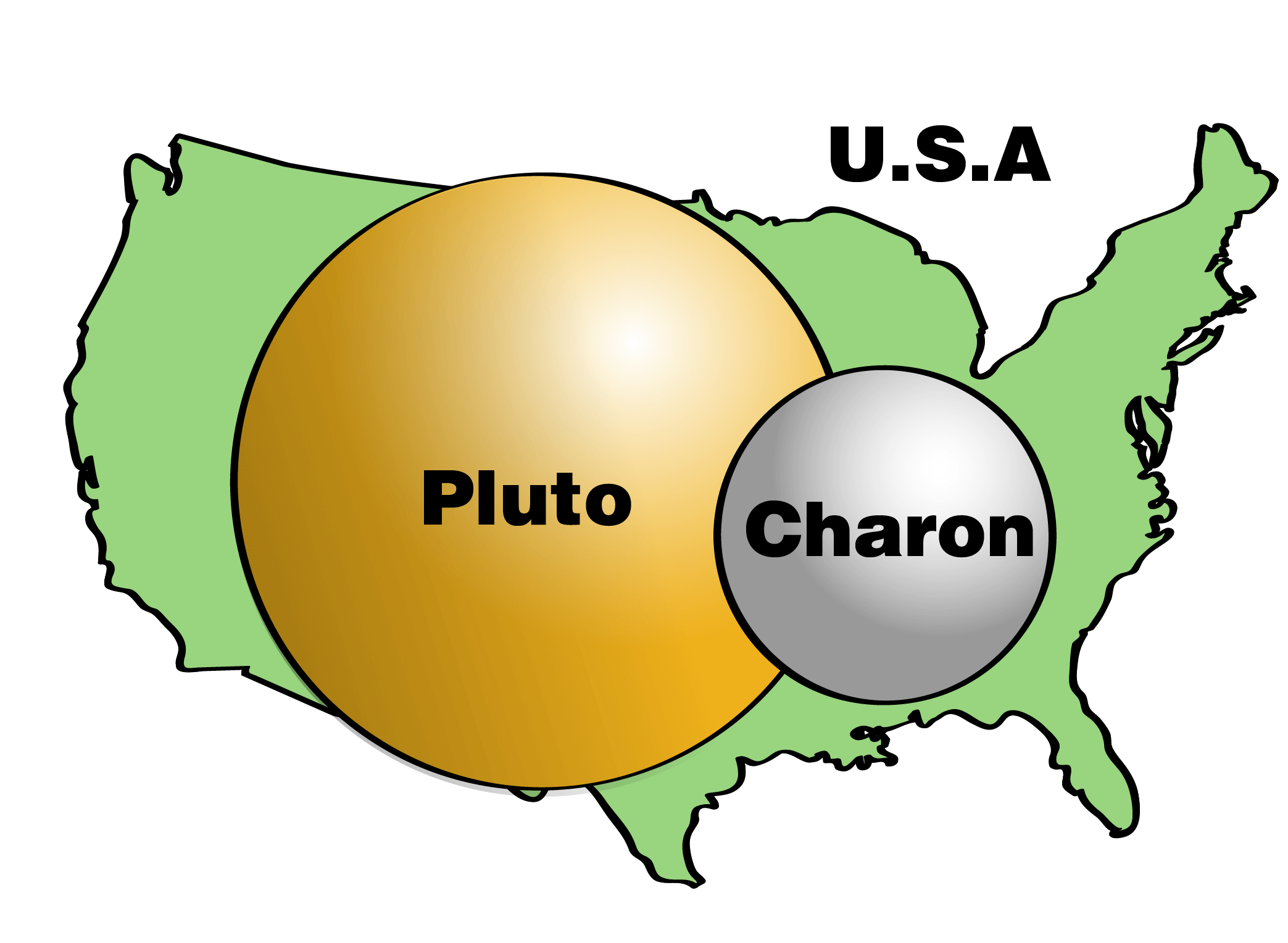
Credit: NASA/JPL-Caltech
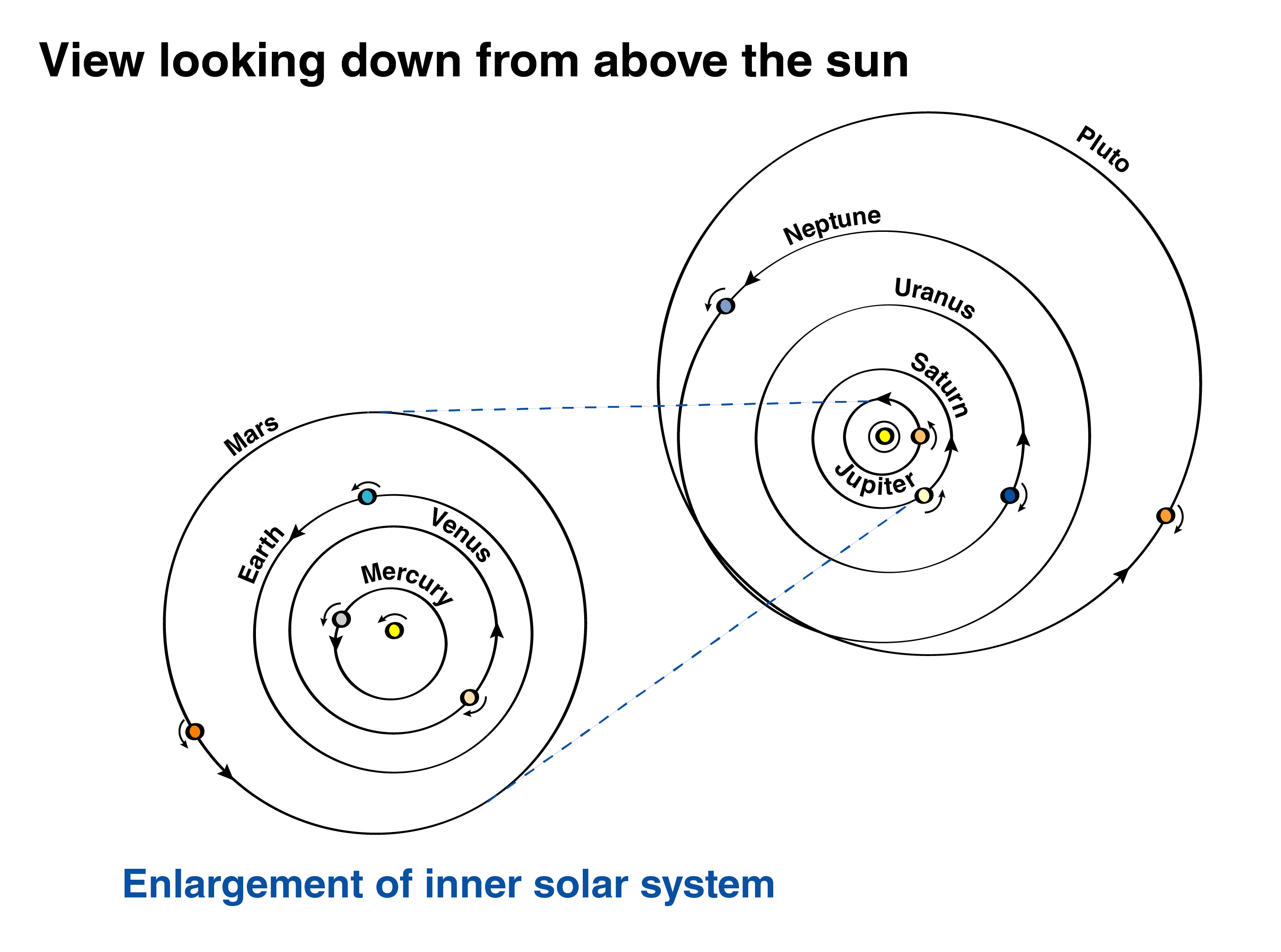
In the picture above, the arrows show the direction the planets and Pluto rotate. Notice Pluto's spin goes the opposite direction of all the others except Venus and Uranus. Credit: NASA/JPL-Caltech
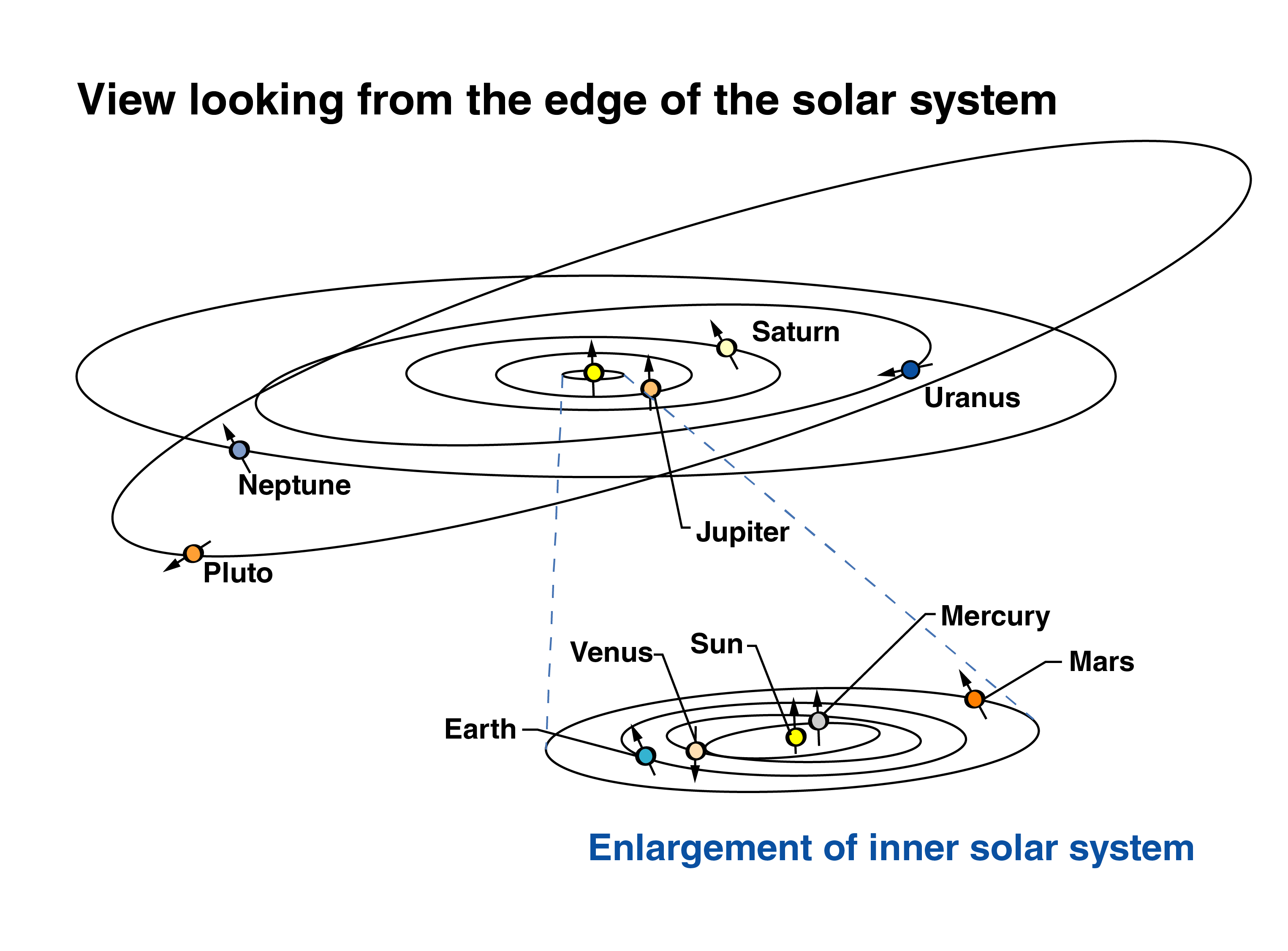
In the picture above, the arrows show which direction the planets' and Pluto's axes of rotation point. Notice Pluto's and Uranus' point along the same plane as their orbits, instead of more or less "up and down." Credit: NASA/JPL-Caltech
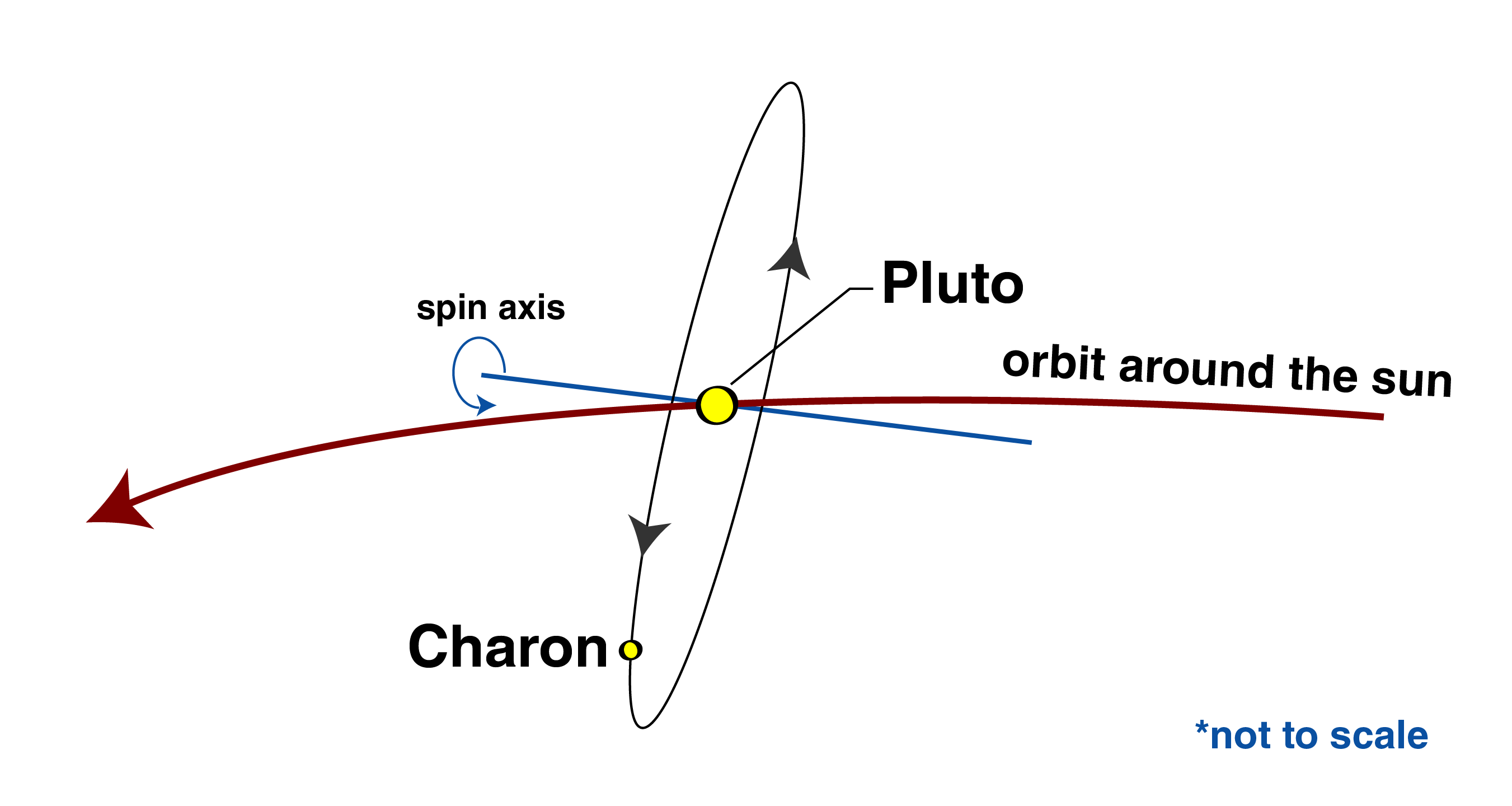
Credit: NASA/JPL-Caltech

Credit: NASA/JPL-Caltech

Credit: NASA/JPL-Caltech
But why is Pluto not a planet?
A while back, Pluto was the ninth planet from the Sun. It was also the smallest planet.
But not anymore. Poor Pluto. Just how did it get “kicked out” of our family of planets? And who are its “real” family members?
Astronomers have already named four other objects in the solar system that are about the same small size as Pluto. They are Ceres [SEAR-ees], Makemake (MAH-kee-MAH-kee], Haumea (HOW-may-ah], and Eris (AIR-iss]. Eris may be as big as, or even slightly bigger, than Pluto. But, overall, these objects, along with Pluto, are much smaller than the “other” planets.
Ceres orbits in the asteroid belt between Mars and Jupiter. Makemake, like Pluto, is part of the Kuiper Belt, which is a region of trillions of icy objects orbiting beyond Neptune. Eris' orbit is even farther out.
Astronomers have put these objects into a new family called dwarf planets.
A pilgrimage to Pluto!
We finally got to visit Pluto, Charon, and the Kuiper Belt! On January 19, 2006, NASA launched a robot spacecraft on the long journey. This mission is called New Horizons. New Horizons flew by Pluto and its moons on July 14, 2015 and continues to study other objects in the Kuiper Belt to this day.
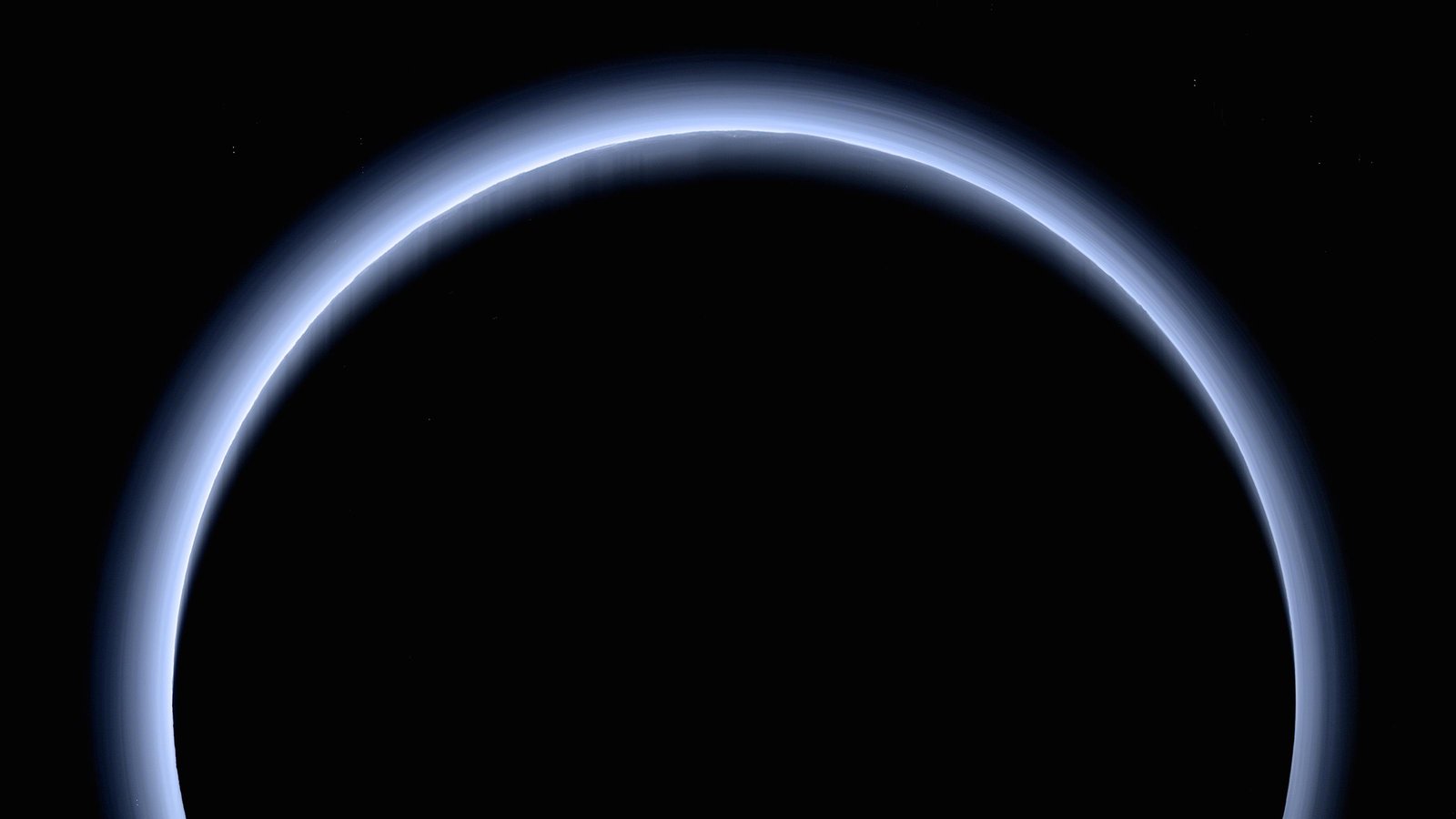
This beautiful photo of Pluto was taken by NASA's New Horizons spacecraft when the spacecraft was 120,000 miles away from Pluto. Credit: NASA/JHUAPL/SWRI
With New Horizons, we are visiting and learning about the objects at the very edge of our solar system. They may help us understand how our solar system formed.
In early 2019, New Horizons flew past its second major science target – Arrokoth, the most distant object ever explored up close. Learn more here!


